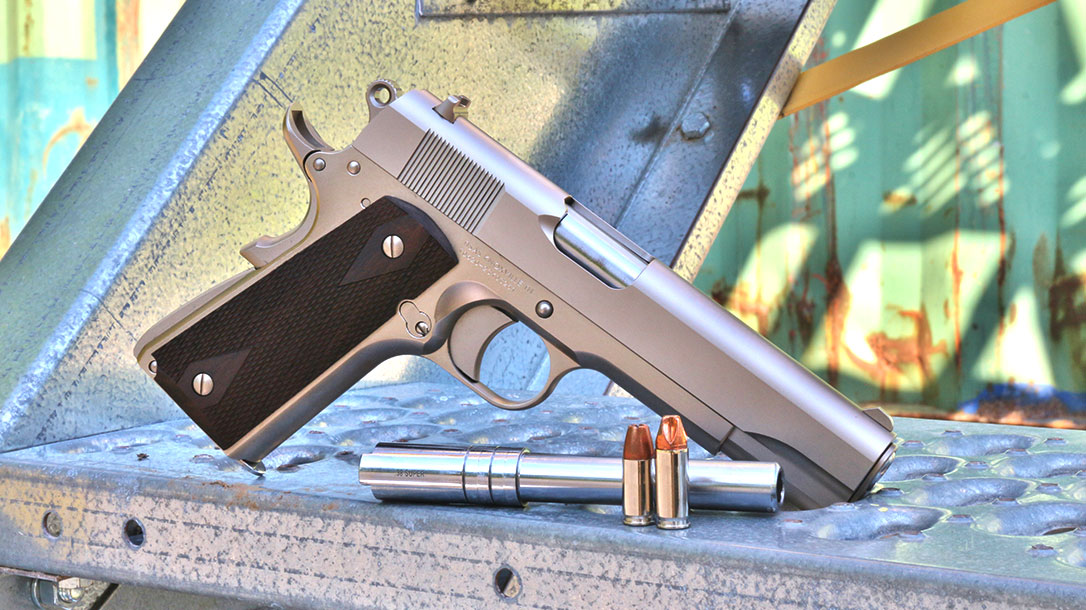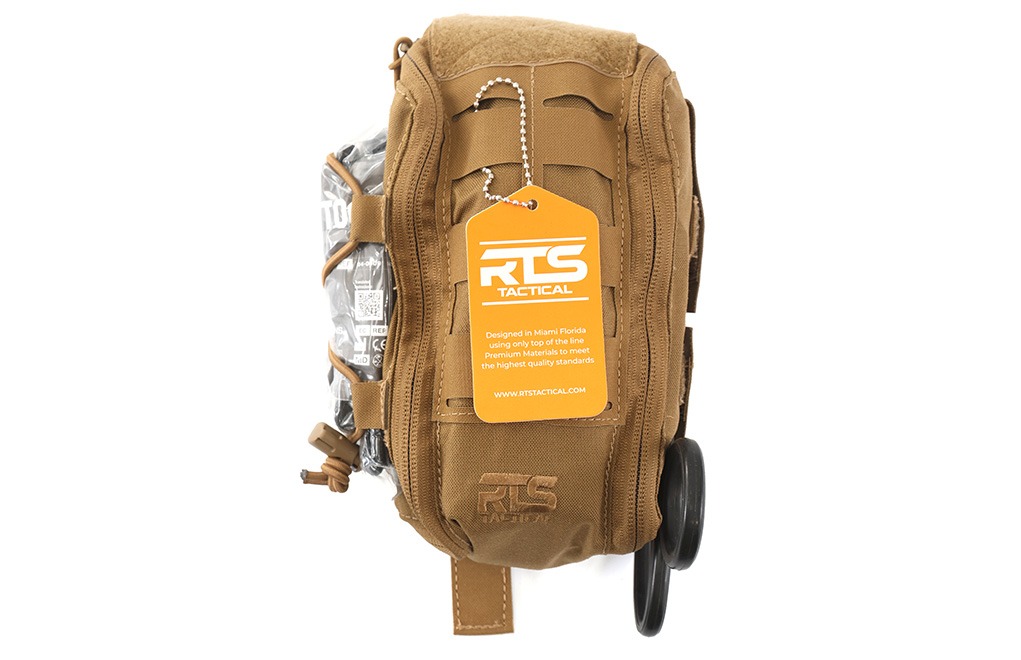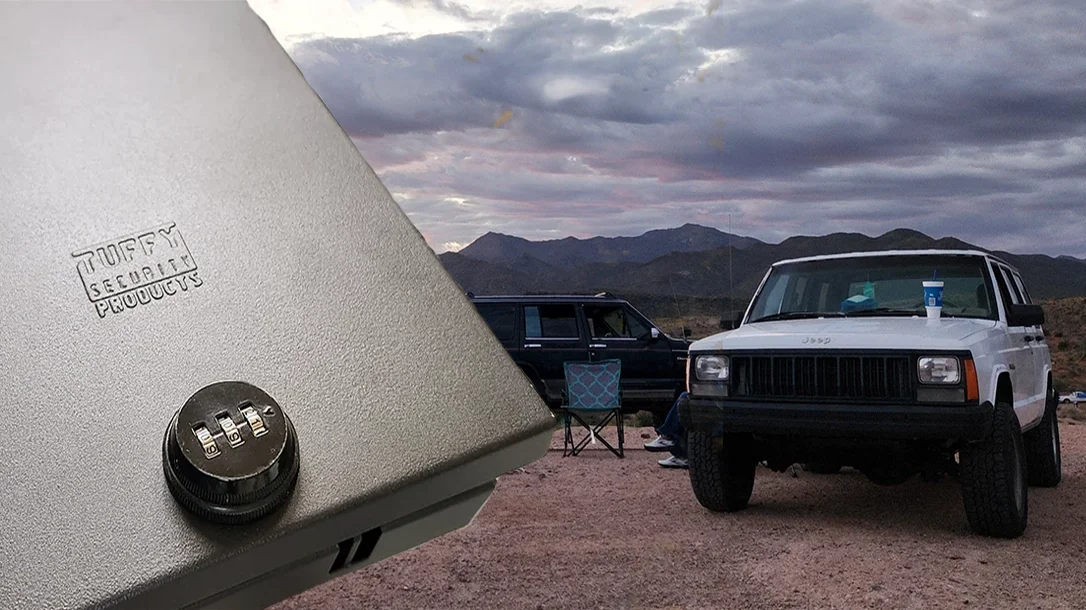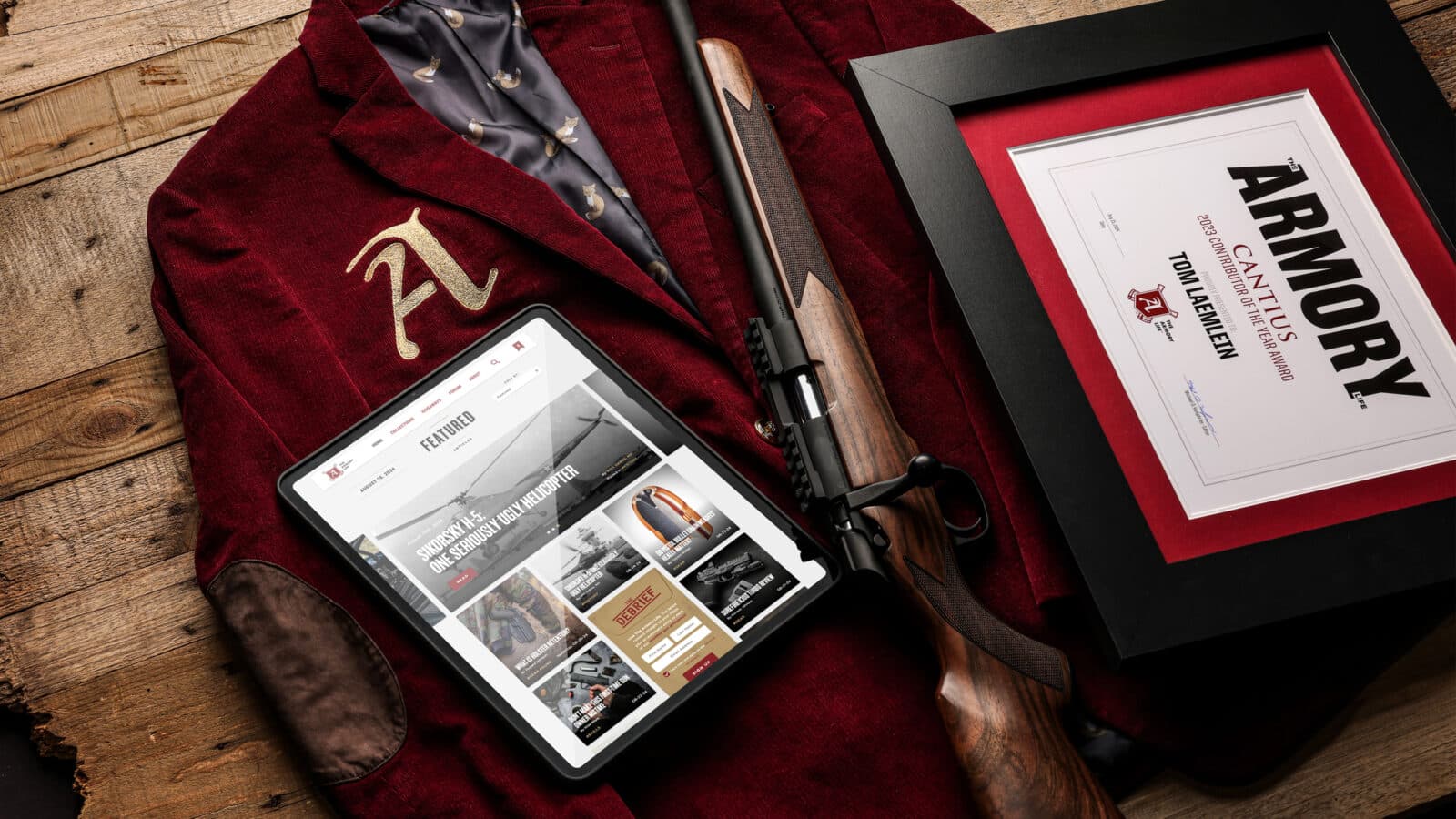Expanding the Line with Multi-Caliber Stunner

In the last year, I fielded more firearms chambered in 10mm and .45-70 Gov’t than most other years combined. A sucker for a good comeback story, I always jump on assignments that look like a manufacturer is trying to bring back a classic. Having a suspicion the .38 Super might be next, it was no surprise to see a new introduction from Tisas in this chambering slide through my inbox—the Stakeout.
The Tisas Stakeout Multi-Cal
What was surprising was the company’s innovative approach and, of course, the signature paltry price tag. Technically an extension of the Stakeout series, the new Nickel-Plated offering is ready to sling not only .38 Super but plain old 9mm Luger as well. Multi-caliber 1911s aren’t anything new. But could a barrel and mag change be all it takes to run both cartridges reliably? I had to know, so I requested one for testing and tore it apart the moment it arrived.
Like most Tisas products, the new Stakeout arrives with a bevy of accessories. We live in a time when new guns typically come in nothing more than a cardboard box. So, it was refreshing to receive a pistol in a hard-sided locking case with a complete cleaning kit, a child safety lock, a printed instruction manual, and even a chamber flag.
A Finish Beyond Its Price Point
Pulling the gun from the case, I was bewildered as to how Tisas could offer such a lavish finish for this price point. It was utterly smooth. So much so that I needed the help of the cocking serrations to lock the action open.
Additionally, it was one of the most even plating jobs that I’ve ever seen. That takes time and eats into profits. However, Tisas is never afraid of the latter, as its business model revolves around quality. If your guns are built well, folks will keep buying them, earning you more in the long run.
For the gun geeks, the nickel is applied through the electroless process. This takes longer and requires more monitoring, but it won’t rub off the way electrolytically applied nickel does. In other words, it’s not made using the same technique as cheap gold-plated jewelry.
Since the process doesn’t rely on electrical current, there won’t be a buildup of nickel in the areas that conduct more electricity. This is why the aluminum trigger matches the frame and slide. They are made from 4140 alloy steel and handle the flow of juice differently.
A Build Befitting a 1911
The new Stakeout is more than just a pretty face, as signified by Tisas’s choices in materials and the process that turns them into the finished product. Alloy steel is harder to work with than aluminum, particularly after hardening.

Many manufacturers drop their manufacturing costs by making all of their cuts prior to the hardening process. This is because it’s easier on their tooling and allows them to churn out parts. The problem with this is that typically, more material is removed than you wish through flaking and overcutting. The end product generally has more slop to it and exhibits poor accuracy and reliability.
Tisas hardens the Stakeout’s materials before machining them. This yields a better firearm at the expense of time and more frequent retooling. The difference becomes apparent at the range, so I quickly started preparing for my much-anticipated live fire test day.
Feeding the Stakeout
Nothing excites me like ammunition, so a gun that fires two types is twice as fun for me. With that, I wanted to shoot loads that spoke to both the playful nature of each round and its use as a defensive tool.
Many USPSA competitors are using .38 Super to make major power factor. Careful handloads can push the same pills traditionally loaded into 9mm Luger to far faster speeds. Representing this in a factory load is Underwood’s 90-grain Xtreme Defender +P ammunition, which scoots along at approximately 1600 feet per second.
For this test, its counterpart would be Winchester’s 9mm Defender load. It takes a hard-hitting 147-grain jacketed hollow-point bullet beyond the 1,000 FPS mark.

For light target work, I grabbed a few boxes of Bill Wilson’s Signature Match .38 Super. It pushes a 125-grain Hornady HAP projectile at reduced speeds to pull greater accuracy.
Finally, Federal’s 9mm Syntech paired well with this as it follows the same concept. However, it has a copper-jacket-free bullet that is safer than traditional pills when shooting steel targets.
The Stakeout on the Range
I began my day by field stripping the pistol to see if any sort of trickery was inside to make it run both types of ammo. To my delight, there wasn’t anything too special other than what appeared to be a properly tuned recoil spring that could handle both rounds.

Swapping in the .38 Super barrel, I decided on 25 yards as my test distance. I expected it would challenge the Stakeout, but I was wrong. Using Wilson Combat’s Match load, I punched five-shot groups that measured as tight as 1.59 inches. This is amazing for a 1911 with nothing more than iron sights. Underwood’s defensive-minded rounds opened up a bit more but still grouped under three inches in most cases.
After swapping in the 9mm barrel, I found similar results with both types of ammo. The gun weighs 40 ounces, so there was no discernable difference in recoil. My only gripe was that the sights needed a little adjustment, which I carefully did by drifting the rear and then holding for elevation.

A Pistol Purpose Built for Reliability and Accuracy
Taking the Stakeout over to the steel pit, I set out to conduct a reliability test and run a few drills. Since the pistol is built to a standard full-sized government profile, just about any 1911 holster will work with it.
From concealment, I was able to drop controlled pairs onto a Caldwell IPSC in as little as 1.51 seconds. Both rounds landed in the A-zone. From here, I transitioned to Mozambique drills, in which the 9-round mag allowed for three in-between reloads. When it was time to slap a fresh one in, I found mags dropped free, and the slight beveling around the well worked wonders for guiding the new one home.
I ended my day with several mag dumps of all four types of ammo. There was only one failure to fire out of close to 500 rounds. However, I will note that this was at the very end of the day when the gun was in dire need of cleaning. It was also smoking hot and nearly void of lubricant at this point.

Tisas Gets the Stakeout Right
Wrapping it up, I believe that Tisas has a hit with this pistol. It’s going to appeal to the “utilitarian” crowd as much as it will the “fancy gun” folks. I’ll admit, I seldom consider procuring a gun based on looks, but the .38/9mm Stakeout is a stone-cold stunner. More importantly, it shoots as good as it looks, helping to justify purchasing pretty.
Is .38 Super going to be the next comeback kid? It’s hard to say. However, if guns like this keep hitting our shores, you better believe it’s going to be the next round in shortage.
For information, please visit SDSImports.com.
Tisas Stakeout Specs
| Caliber | 9mm Luger or .38 Super |
| Capacity | 9+1 |
| Barrel | 5.00 inches |
| Overall Length | 8.62 inches |
| Weight | 40 ounces |
| Grips | Walnut |
| Sights | Fixed front, drift adjustable rear notch |
| Action | SA |
| Finish | Electroless Nickle |
| MSRP | $599.99 |

Performance
| Load | Velocity | Accuracy |
| Federal Syntech 9mm Luger 115 TSJ | 1171 | 2.70 |
| Winchester Defender 9mm Luger 147 JHP | 1029 | 2.61 |
| Wilson Combat Signature Match .38 Super 125 JHP | 1110 | 1.59 |
| Underwood .38 Super +P 90 Xtreme Defender | 1612 | 2.68 |
Bullet weight measured in grains, velocity in feet per second, and accuracy in inches for best five-shot groups from 25 yards.
Sidebar
ESS Crowbar Sunglasses
Just like the Stakeout, ESS Crowbar Sunglasses pull double duty. Off the range, they protect against UV rays, while on the range, they protect against spall, sparks, and ricochets.

Aside from being tough as nails, the Crowbar series features the Lens Gate system, which switches from clear to tinted as light conditions dictate. At the time of this writing, six different options are available to handle everything from deep cloud cover to blistering desert sand. This is an excellent product to stash in your vehicle. Especially if you never know where the road is going to take you.
For more information, please visit ESSEyePro.com.
Didn’t find what you were looking for?







